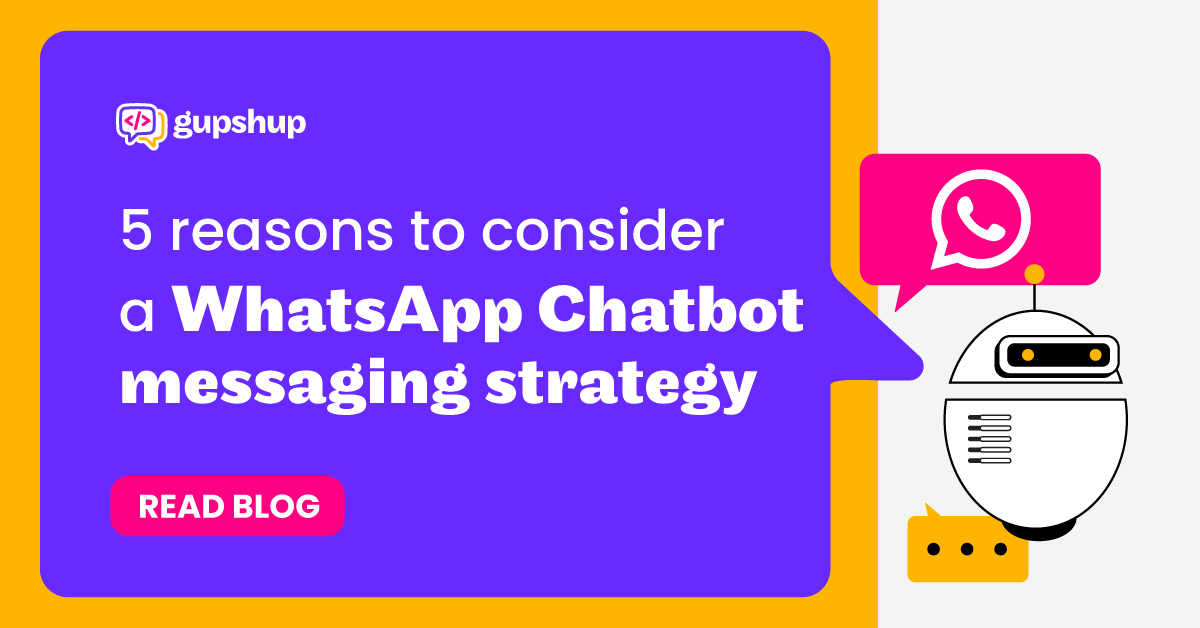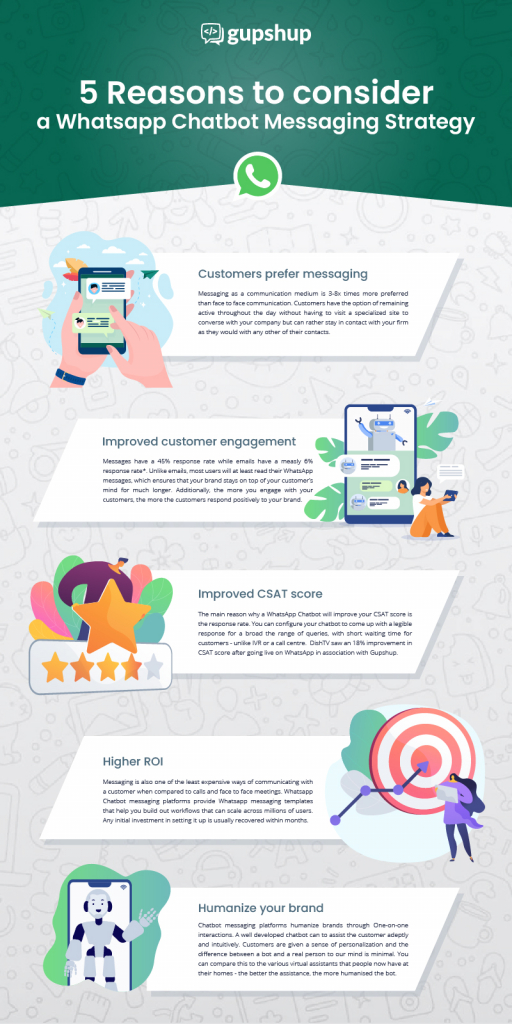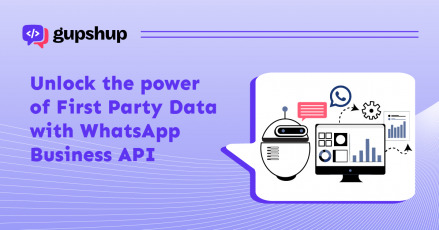5 reasons to consider a WhatsApp Chatbot messaging strategy

A key evolution of the brand messaging strategy is that a consumer should be able to communicate with the brand as they do with their friends. Messaging is the key to that. Messaging apps like WhatsApp are the most widely used smartphone apps. It has over 2 billion monthly users worldwide and approx. 459 million active users in India.
Given the rise in Whatsapp for Business accounts around the world, the platform is enabling the creation of conversational experiences delivered via Whatsapp Chatbots. Whatsapp Chatbots allow conversations between brands and consumers through a familiar experience and allow the creation of meaningful experiences. As compared to chatbots on websites, WhatsApp chatbots can aid you in reaching consumers with significantly more flexibility and frequency. This is primarily due to the way most users operate on WhatsApp – they are perpetually active and available to reply most of the time.
Here are 5 reasons why you should consider working on your Whatsapp chatbot messaging strategy

- Customers prefer messaging apps to talk to business:
Most customers globally prefer messaging to talk to businesses. Messaging as a communication medium is 3-8x times more preferred than face to face communication. So, a WhatsApp Chatbot might be more effective than one on your website.
On WhatsApp, customers have the option of remaining active throughout the day. This means that they do not need to visit a specialized site to converse with your company but can rather stay in contact with your firm as they would with any other of their contacts. Hence, chatbots can be a significant part of your brand messaging strategy. - Improved customer engagement:
Messages have a 45% response rate while emails have a measly 6% response rate (according to studyfinds.org). Conversing using WhatsApp chatbots also allows you significantly more options of converting a lead into a customer. You can stay in continuous touch with the customer regarding the interests they have expressed, and provide them with regular updates regarding their queries. Unlike emails, most users will at least read their WhatsApp messages, which ensures that your brand stays on top of your customer’s mind for much longer. Additionally, the more you engage with your customers, the more the customers gets to appreciate your commitment to their queries. - Improved CSAT score:
Customer service is the backbone of several businesses. High engagement on messaging channels could help boost the CSAT score. DishTV for example saw an 18% improvement in CSAT score after going live on WhatsApp in association with Gupshup.The main reason why a WhatsApp Chatbot will improve your CSAT score is the response rate. Whatever the query of the customer, you can configure your chatbot to come up with a legible response. You can always broaden the range of queries that your chatbot accepts. It reduces waiting time for customers – as is nearly always the case with IVR or a call centre – and increases the rate of satisfaction. - Higher ROI:
Messaging is also one of the least expensive ways of communicating with a customer when compared to calls and face to face meetings. Whatsapp Chatbot messaging platforms provide Whatsapp messaging templates that help you build out workflows that can scale across millions of users.The primary cost involved in developing a WhatsApp chatbot is the programming cost. You might need to hire a freelance programmer or a third-party programming company for the same. The cost of these resources varies according to parameters such as number of employees, experience, and legacy. However, the returns you will receive within a few months of deploying the chatbot will far outweigh the investment. - Humanize your brand:
Chatbot messaging platforms humanize brands through One-on-one interactions. Even if it is with a bot, customers are given a sense of personalization. A majority of customers would pay more for something if it was supported by a mobile messaging channel according to a survey. The reason for this is that when conversing on WhatsApp Chatbot, the difference between a bot and a real person to our mind is minimal. This difference is further reduced if the chatbot is well-developed and able to assist the customer adeptly. You can compare this efficiently to the various virtual assistants that people now have at their homes – the better the assistance, the more humanised the bot. Just as the acceptance and use of such assistants has been increasing in numbers over the past years, the acceptance of WhatsApp chatbots is also likely to improve.
Conclusion
WhatsApp Chatbots are an efficient brand messaging strategy, regardless of the industry or type of company you are working in. Deploying a WhatsApp chatbot can improve your customers’ engagement with your brand at a comparatively low cost. The right time to start working on your WhatsApp chatbot is right now, with the customer base at an all-time high!
Click here to explore how you can build WhatsApp Chatbots with Gupshup.
Explore our infographic on whatsapp chatbots here.



